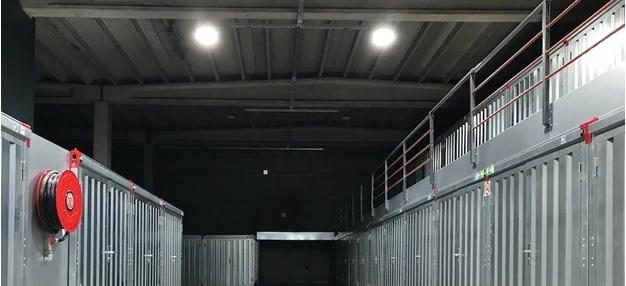7th Dec 2022
Picture the installation of a halogen bulb or incandescent light bulb. You choose a light bulb that has the appropriate base type for a fixture, then plug or screw it into the socket.
Flip the switch - the light comes on. As long as the bulb’s wattage is safe with the requirements of the fixture, you’re good to go.
Other types of lighting, such as high-intensity discharge (HID) lamps, are not quite this straightforward.
The electroluminescence that actuates incandescent bulbs is much more simplistic. You run a current along the filament and it glows. HID lamps require a much more involved electrical process to start them and warm up before they reach full brightness.
Not only must HID lamps be appropriate in terms of wattage (and voltage) for the fixture, they must have the appropriate base type (like an incandescent bulb) as well as a component known as an HID ballast. (Some HID lamps must also be burned up, down, or even at a specific angle!)
The HID ballast is a crucial electrical component that mediates voltage and current to the lamp in order to enable it to start up safely, reach and maintain full brightness, and operate without burning out prematurely. Here’s what you need to know.
What Does an HID Light Ballast Do? (And Why Are They Necessary)
First things first, to answer a quick question. If you are using an HID lamp, whether it’s for your car’s headlights or to illuminate the space around a parking lot, the bulb needs an HID ballast. This is true of all HID lamps, period. Sometimes, the HID lamp in question contains an integral ballast, but don’t assume that is the case.
The first primary function of the ballast is to provide an adequate start-up voltage. Typically, HID lamps require a voltage spike at startup to “heat them up” by creating an arc between the two electrodes in the lamp.
The second primary function of the HID ballast is to mediate the voltage and current after startup to ensure the bulb burns at the appropriate light output. After the initial electrical arc, at which point the lamp has warmed up, the ballast drops the voltage and maintains a steady current - this enables the lamp to shine brightly and consistently once it reaches peak brightness, without fading, flickering, or dimming.

Are There Different Types of HID Light Ballasts?
There are different types of HID ballasts, although all of them perform the same basic function of supplying and mediating voltage and current.
The majority of modern HID ballasts are electronic. Electronic ballasts use a circuit to help regulate the voltage and current supplied to the bulb. Sometimes, electronic ballasts contain modern safety features, such as short circuit protection as well as under or over-voltage protection.
Some modern HID ballasts are digital ballasts. Digital ballasts draw very little energy and are very efficient. Digital ballasts may also provide special controls over temperature and brightness, which can optimize the operation of the HID light for longer life.
While most modern HID bulbs work in conjunction with electronic or digital ballasts, traditionally, HID ballasts have belonged to a class known as magnetic ballasts. Magnetic ballasts contain a series of internal components that regular voltage and current including a capacitor which stores charge.
Some ballasts are considered probe-start ballasts, in which a separate probe electrode is used to start the lamp. The probe electrode supplies the initial arc and is then removed from the circuit when the lamp reaches full brightness. These ballasts are somewhat slower and it takes a longer time for the lamp to warm up and reach full brightness.
Another type of ballast is called a pulse-start ballast, which instead of a starting probe use an igniter which pulses alongside the ballast to start the lamp. These ballasts are easier on the lamp while also being more efficient at startup. They reach full brightness more quickly and since they are more efficient, lamps using them tend to last longer.
(There is another type of HID ballast known as a CANbus system that is sometimes used with cars that have HID headlights installed. CANbus, which stands for “controller area network” allows different components to communicate with each other without the need for a central controller, which allows the system to notify the operator if there is an issue with the light or system.)
Do Other Types of Lights Require a Ballast?
HID lights are not the only class of light that requires a ballast. Fluorescent lights also require special ballasts for startup and operation.
In both cases, the ballast is central to the efficient operation of the lamp. The ballast provides startup voltage, regulates voltage and current during operation to ensure consistent brightness without dimming, fading or flickering, and improves the lifespan and energy efficiency of the light. Without a ballast, the light would quickly burn out.
Ballasts enable the light to produce more stable luminescence, can protect the lamp from overcurrent/overvoltage, and modern ballasts can even eliminate the annoying buzzing of traditional magnetic ballasts.

LEDs do not require a ballast, although they require a separate component to regulate voltage and current, known as a driver. Oftentimes this driver is integral to the LED. Additionally, some LED lamps that are intended to replace HID lamps (like corn cob LEDs), are ballast compatible, which means that they may be considered “plug and play” replacements that can simply be plugged into an existing fixture. Other LED replacements will, however, require a ballast bypass or a conversion kit to make an effective replacement for HID lamps.
Incandescent and halogen lights do not require drivers or ballasts.
Does Lightbulb Wholesaler Sell HID Light Ballasts?
If you’re looking for high quality HID ballasts or HID ballast kits compatible with metal halide lamps and high-pressure sodium lamps, we have what you need. Simply consult our selection of quality ballasts via the previous link and get in touch with us at 1-800-492-9660 if you have any questions.

